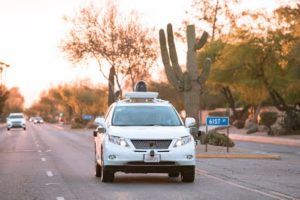Fewer auto adjusters, more product liability claims and changes to crash investigations are just some of the changes that may occur as self-driving cars take to the road, according to Kevin Quinley, founder and principal of Quinley Risk Associates.
In recent years, several automakers have released information on self-driving car prototypes.

“These new cars offer a lot of pluses, potential safety advantages, but the software needed to drive them is not immune to fatigue, but it’s immune from intoxication and distracted driving,” Quinley said.
The expert, with nearly four decades of claims experience under his belt, expects that both personal and work productivity will receive a boost from the technology.
Autonomous cars’ impact on claims will be varied, Quinley said. The targets of claims and lawsuits will change. “When collisions occur and claims and lawsuits inevitably follow, there’s going to be the question where are the deep pockets? Nowadays, if you have a car wreck, typically there will be a claim or suit against one or more drivers, but when driverless cars collide, who do you sue? How do adjusters apportion liability?”
A rise in product liability claims will likely result due to the recognition of deep pockets at the manufacturer and software developer level.
“The more common these autonomous cars become, the more prominent product liability claims will rise and target car manufacturers and/or software components integrated into a car’s electronic system,” Quinley said.
In addition, product liability targets could also include subcontractors that developed the crash avoidance algorithm or that supplied the sensors, he said.
Another issue could be that the high cost of self-driving cars leads to shared ownership arrangements, a headache for adjusters attempting to apportion liability.
Subrogation is another area of claims expected to be impacted by autonomous cars.
“Subrogation opportunities open up against car companies and/or these same software component manufacturers,” he said.
Hacking could lead to a rise in auto theft claims, he said.
“Hacking an autonomous car might be easier than hot wiring a manually operated car,” Quinley said. Besides a single vehicle theft, hackers could ground a fleet or disable brakes, he said.
“Electronic controls powering autonomous cars will run on thousands of lines of code and each of those being a potential access point for hackers,” Quinley explained.
There are countless scenarios related to the cyber vulnerability of self-driving cars. Quinley cited a scenario – kidnap by wire – where a well-known celebrity like Kim Kardashian could be in an autonomous vehicle that is hacked.
“Theoretically, if you could control Kim Kardashian’s limo, you could drive it to a remote location and leave her locked inside waiting for ransom. It wouldn’t necessarily have to go anywhere near her vehicle. The perpetrator, they could be remote,” he said.
Terrorism, is another possibility, he said.
“In an age of growing terrorism, it’s not unforeseeable that bad guys could tinker with software to cause collisions and accidents,” Quinley said.
Auto crash investigations will likely change as a result of self-driving cars.
“Adjuster investigations for these crashes and accidents are increasingly going to shift from controversies, like who really had the green light or right of way? Or who ran the stop sign to questions of whether software glitches or collision avoidance systems and malfunctions in those systems caused the collision,” Quinley said.
Almost all stakeholders expect that driverless cars will reduce accidents. If that happens, Quinley said the need for dedicated auto adjusters will decrease, though that will likely be offset by the increased need for product liability adjusters.
“If enhanced safety flows from having driverless cars, it’s going to impact employment staffing and career paths for adjusters,” said Quinley. “The whole insurance industry infrastructure that exists now, that’s devoted to managing and handling, and processing automobile claims I envision is going to shrink if driverless cars deliver on the promise of reduced accidents and better safety.”
Was this article valuable?
Here are more articles you may enjoy.

 Instacart to Pay $60 Million in FTC Consumer Protection Case
Instacart to Pay $60 Million in FTC Consumer Protection Case  Flooding in California Leads to Soaked Roads, Water Rescues and 1 Death
Flooding in California Leads to Soaked Roads, Water Rescues and 1 Death  Insurance AI Demo Day Calendar Announced
Insurance AI Demo Day Calendar Announced  J&J Talc Jury Awards $1.56 Billion to Asbestos Cancer Victim
J&J Talc Jury Awards $1.56 Billion to Asbestos Cancer Victim 